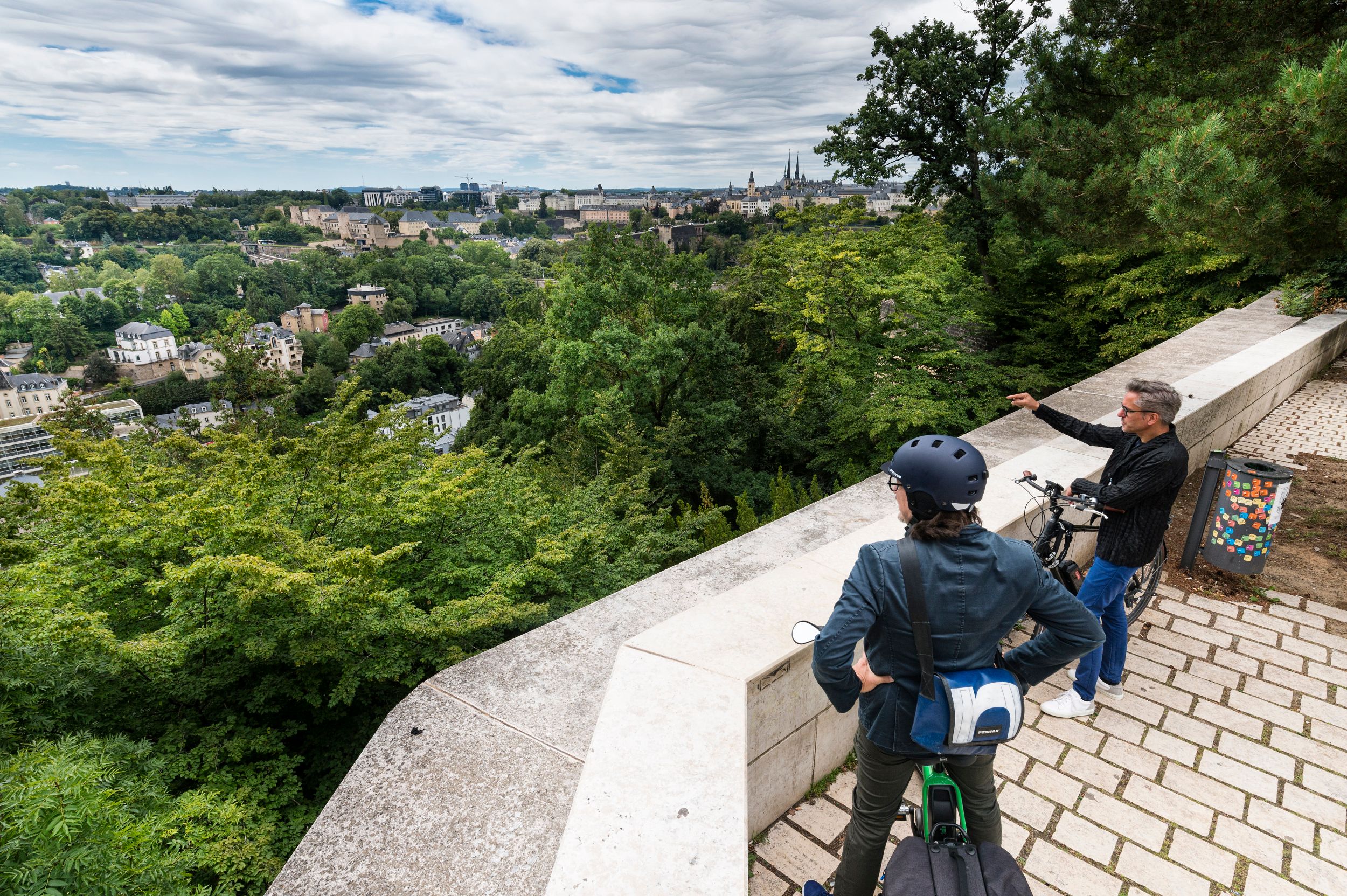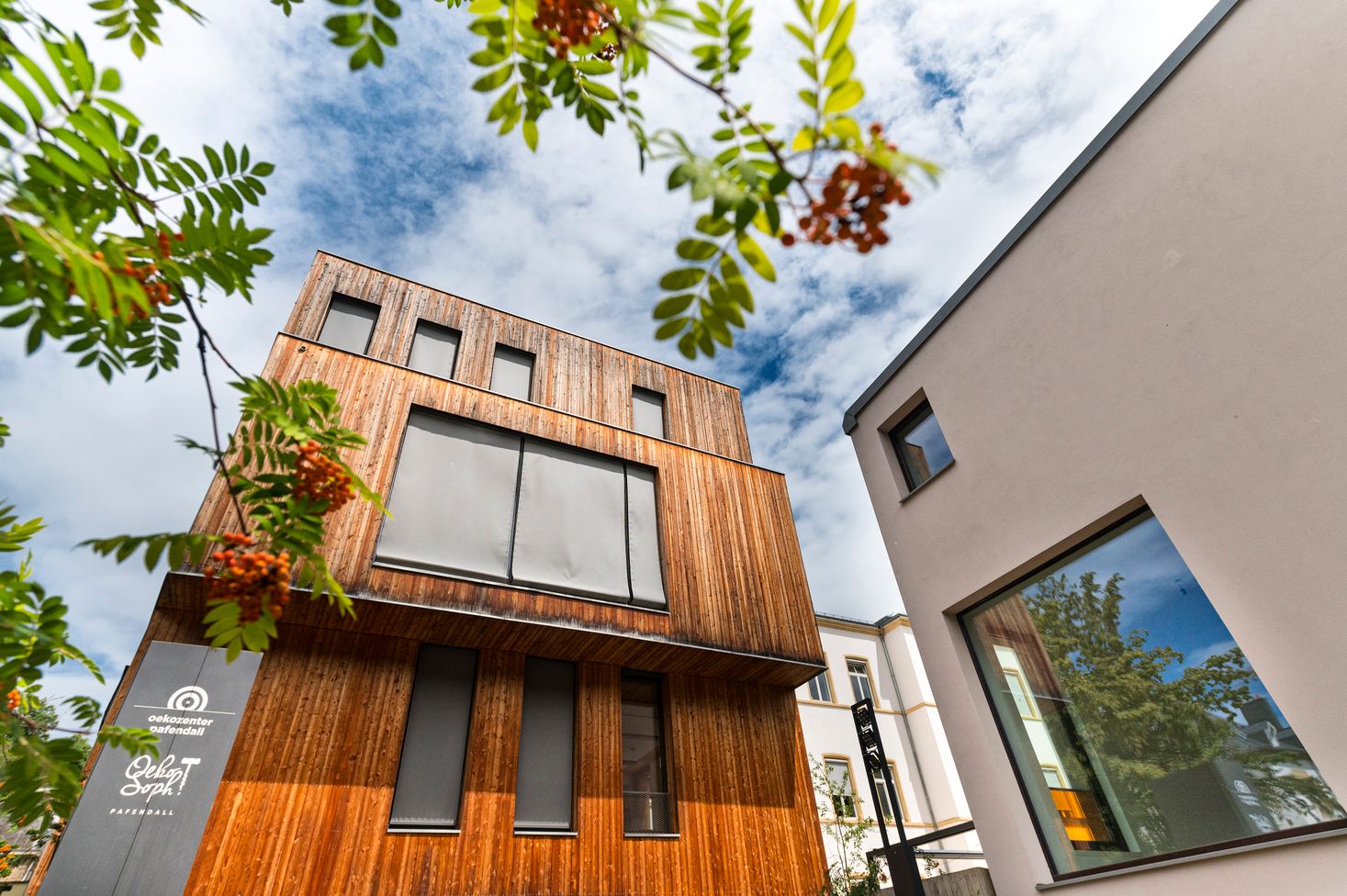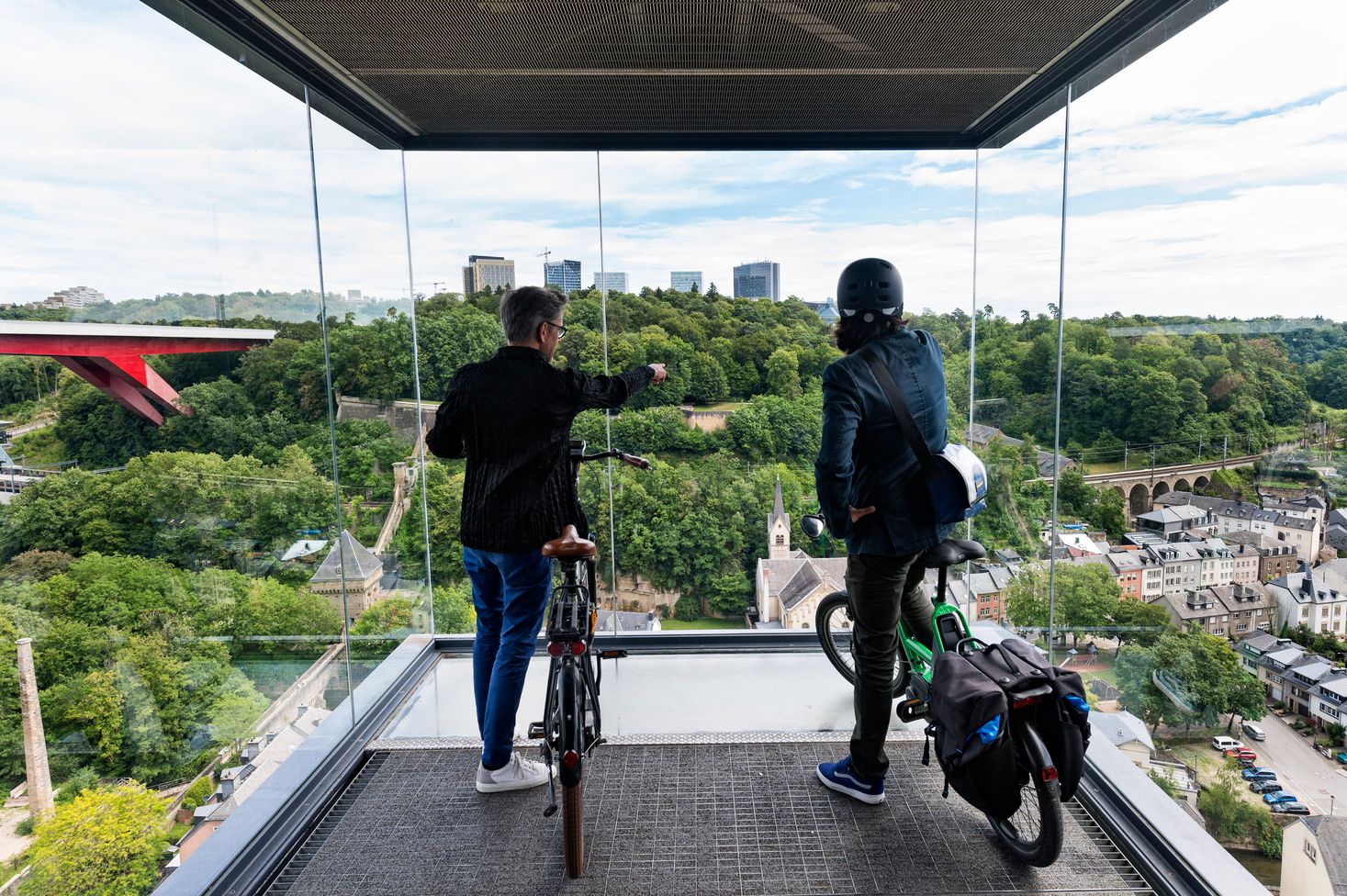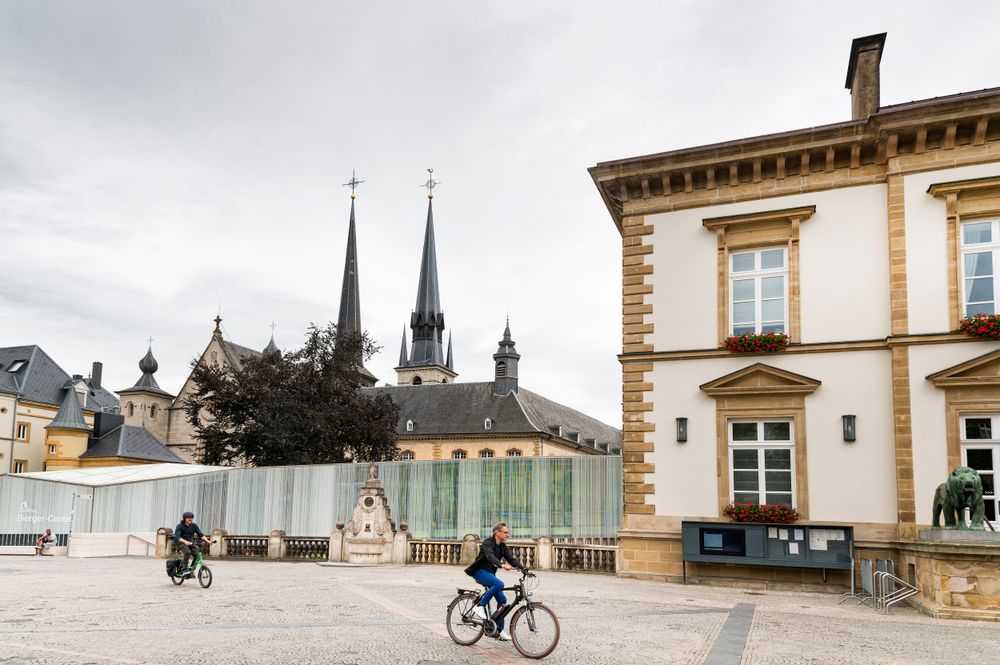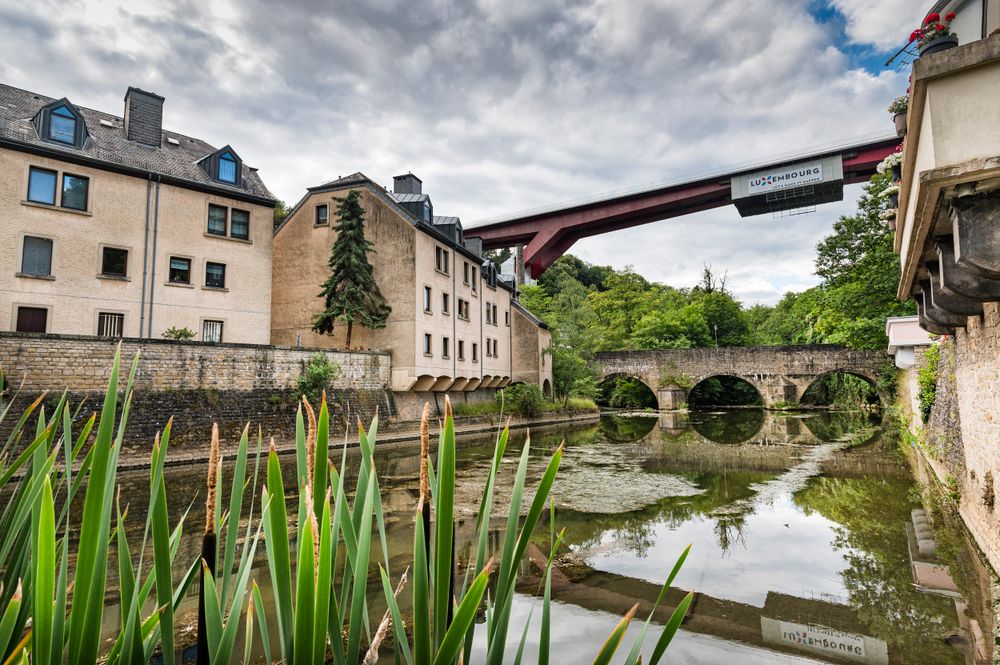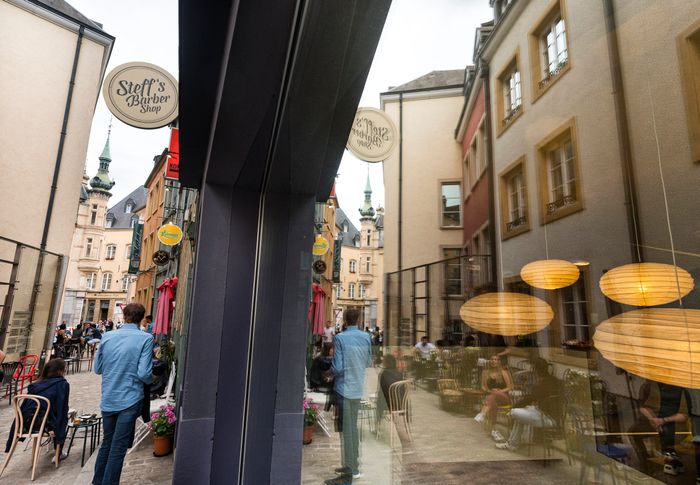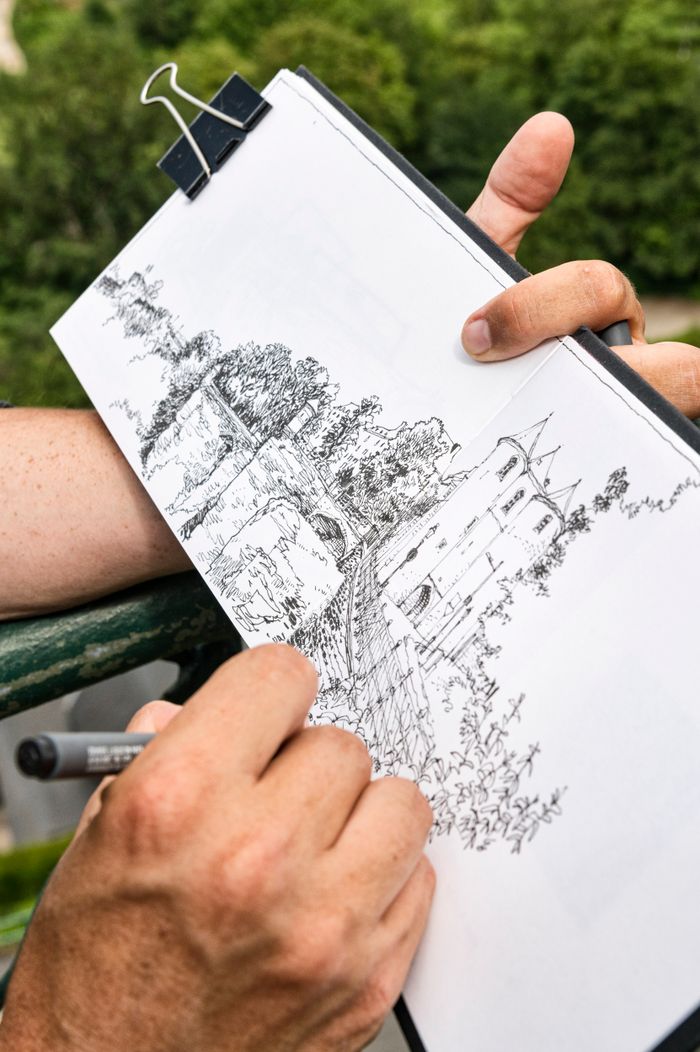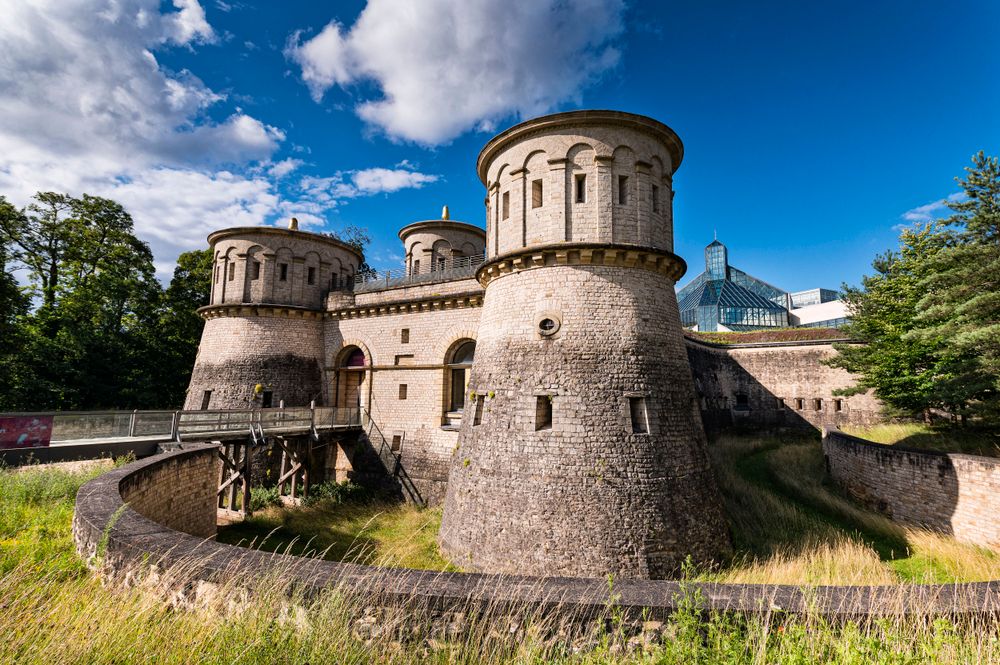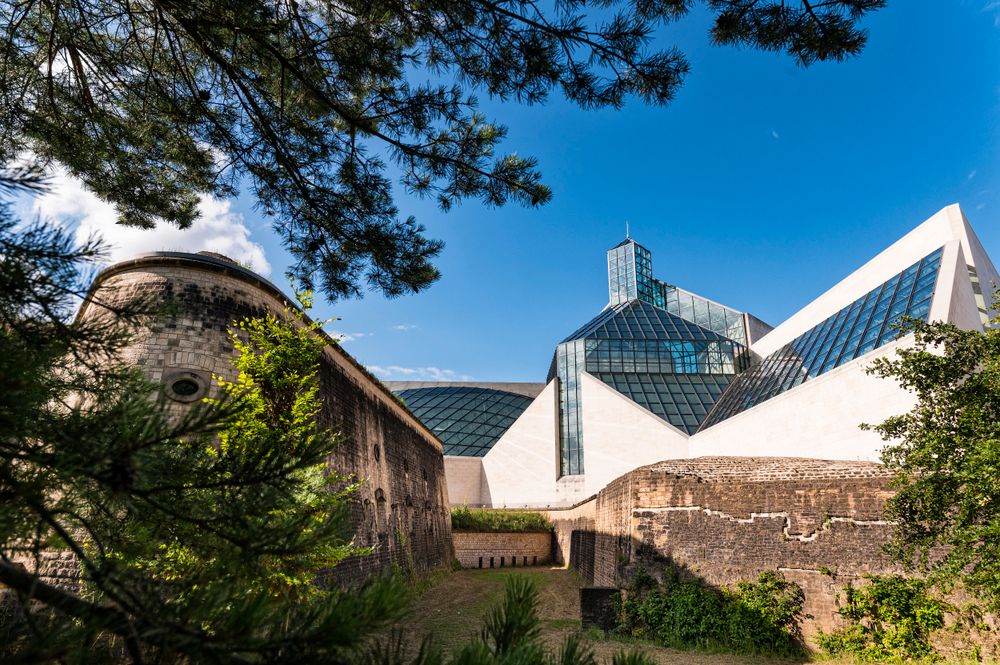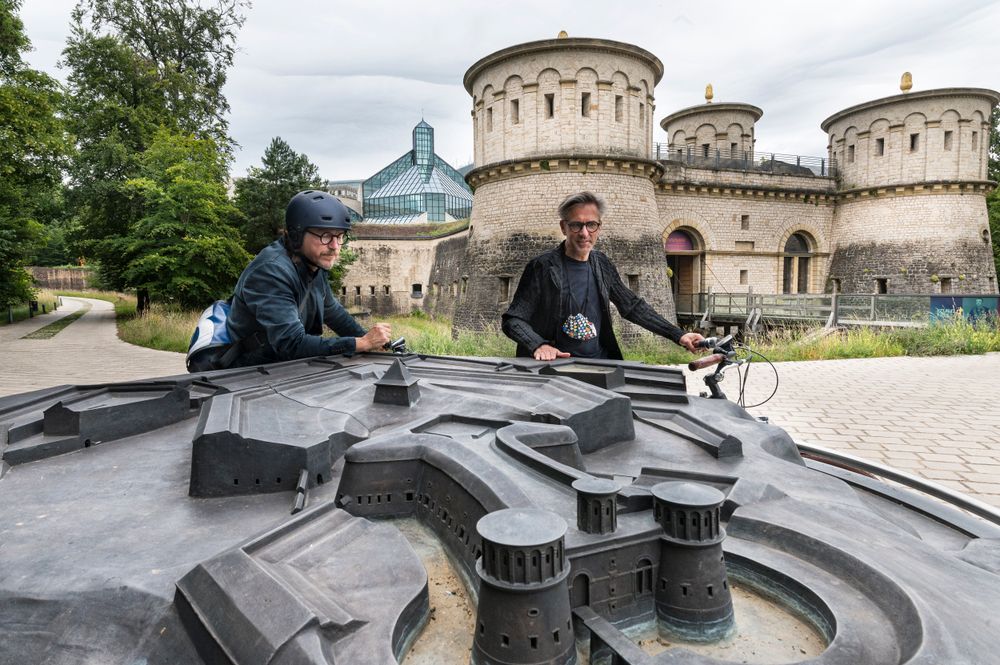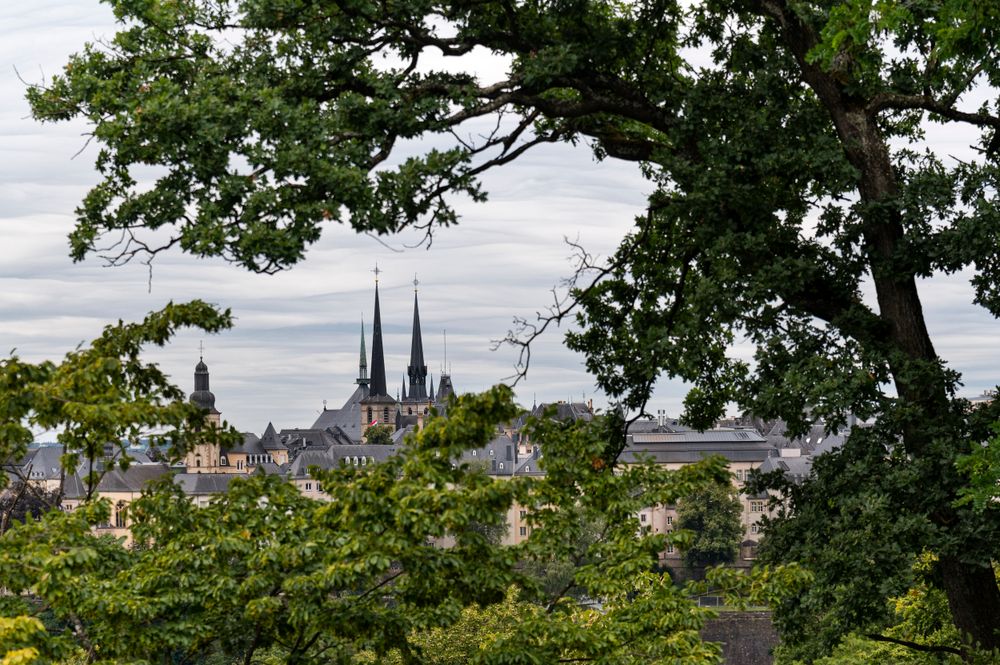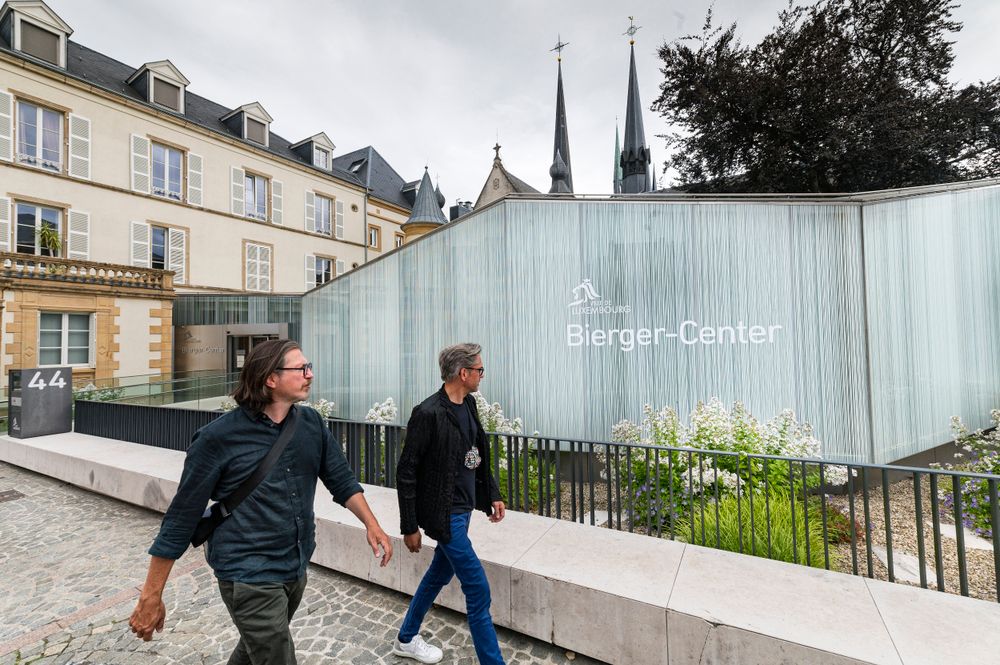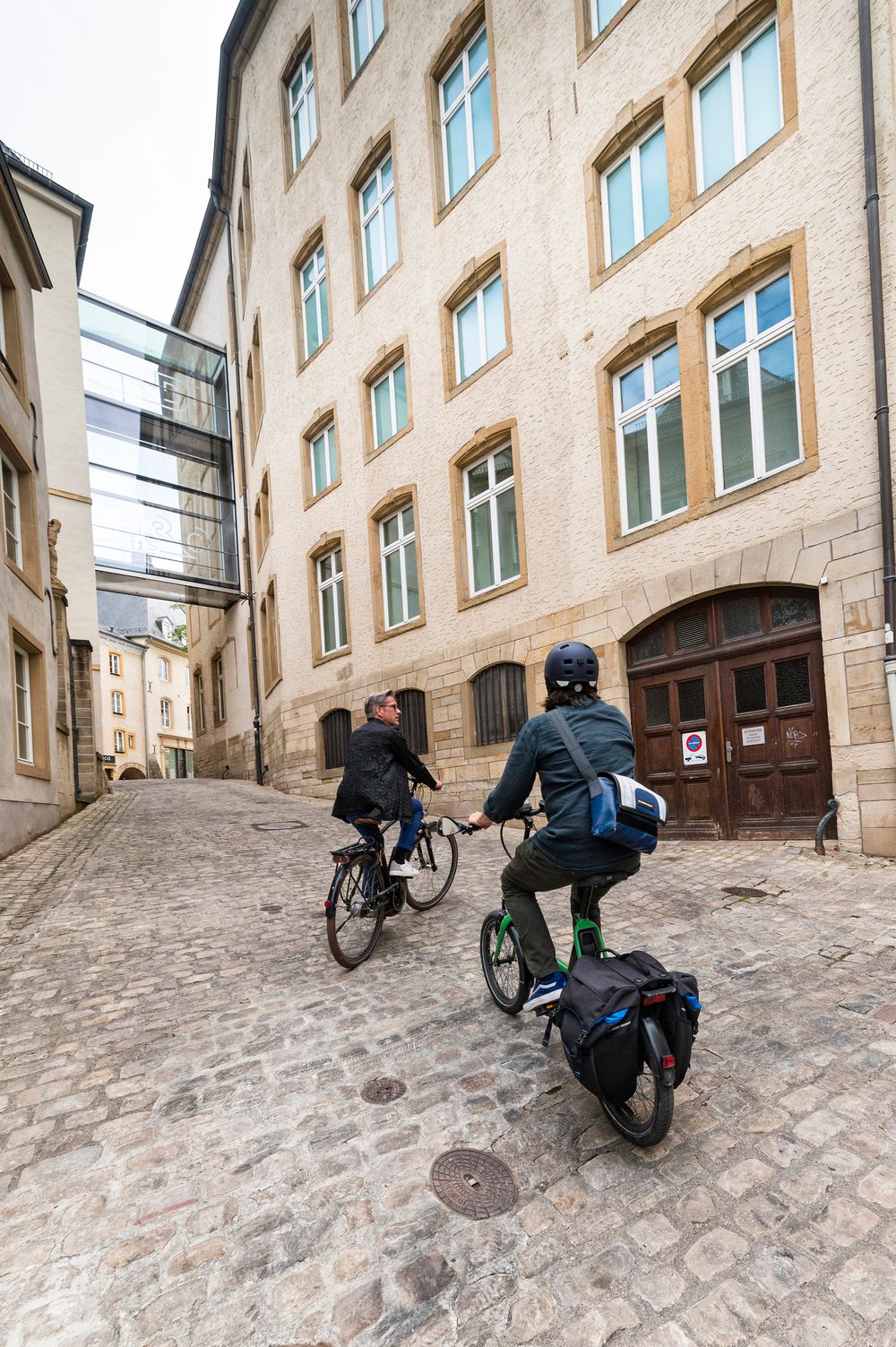A city that connects
Skylines and river valleys, modern glass buildings on historic foundations, and swathes of green: Luxembourg’s capital is as diverse as its residents, who hail from more than 100 nations. A ramble with architects Arnaud de Meyer and Nico Steinmetz through the UNESCO World Heritage site and forward-looking urban worlds.
The scene looks like a sketch created jointly by man and nature: below is the meandering valley of the Alzette; above, the historic casemates and the old abbey; and above still, modern buildings on the plateau in the horizon. Between all of them is the vibrant splash of colour provided by the trees’ rich green leaves. That’s Luxembourg City.
“A city on many levels” is how architect Nico Steinmetz likes to describe his home. We are currently looking out onto the Dräi Eechelen park. The view gives a good example of how varied the capital is – topographically, architecturally and cosmopolitically. It is a Saturday, and Nico and his colleague Arnaud de Meyer are riding through their city on bicycles.
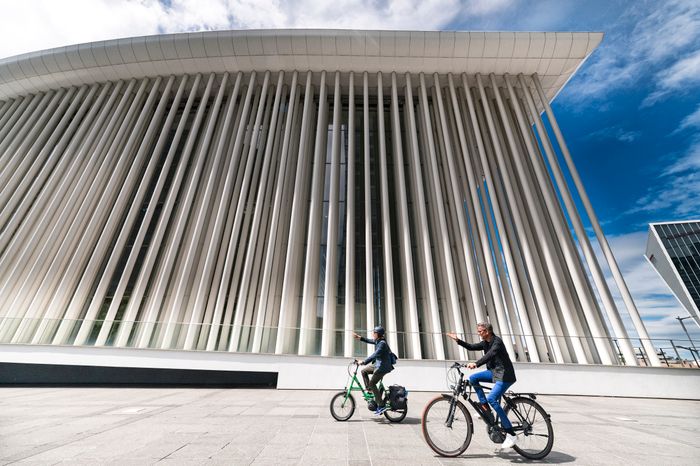
The tour starts on the Kirchberg plateau. The business and financial district is marked by modern glass and steel edifices. The lenticular Philharmonie, all in white, dominates Place de l’Europe with its 823-columns in front of a glass façade. This is where skaters practise their moves in the afternoons. Just two minutes away is the Mudam art museum. The bright building – made of glass, steel and stone and with strong geometric shapes – was built on the site of an old fortress.
Descend a steep, forested path and you arrive in Pfaffenthal. Arnaud and Nico love visiting this former working-class neighbourhood in the Alzette valley. According to Nico, the area has changed beyond recognition in recent times, having been transformed from a “less desirable, out-of-the-way place” to a great location to visit. Birds tweet, while the clamour of children resonates from the playground around the corner. Halfway between the railway viaduct and the Alzette, Nico points to the Oekozenter Pafendall, which hosts the head office of the environmental organisation Mouvement écologique. The light wooden building looks like four blocks stacked on top of each other. It is a textbook example of a modern passive house with an optimum carbon footprint – “a pilot project in Luxembourg,” explains Nico, who designed the centre.
